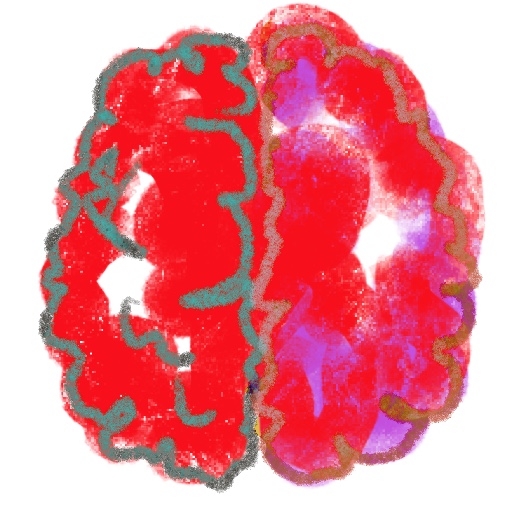Artful Thinking
See-Think-Wonder
Artful Thinking is an educational approach developed by Project Zero at Harvard and here enriched with Sketch&Draw
Artful Thinking uses art to foster deeper thinking and learning across subjects. It emphasizes the use of „thinking routines,“ which are structured prompts encouraging careful observation, interpretation, and reflection through art.
These routines help students sharpen critical thinking, improve problem-solving, and make connections between art and other disciplines.
Artful Thinking promotes curiosity, creativity, and a deeper understanding of complex ideas by using visual arts as a tool for cognitive and emotional engagement.
How Sketching Enhances Creativity in Artful Thinking
Sketching not only sharpens visual understanding but also promotes creative thinking by engaging multiple brain regions simultaneously. Artful Thinking enhances this process through systematic reflection and focused observation, amplifying creative imagination and analytical thinking.
When approaching a piece of art through sketching, we trigger this creativity that is stimulated by the activation of these brain areas that are involved in visual processing, memory, imagination, and problem-solving.
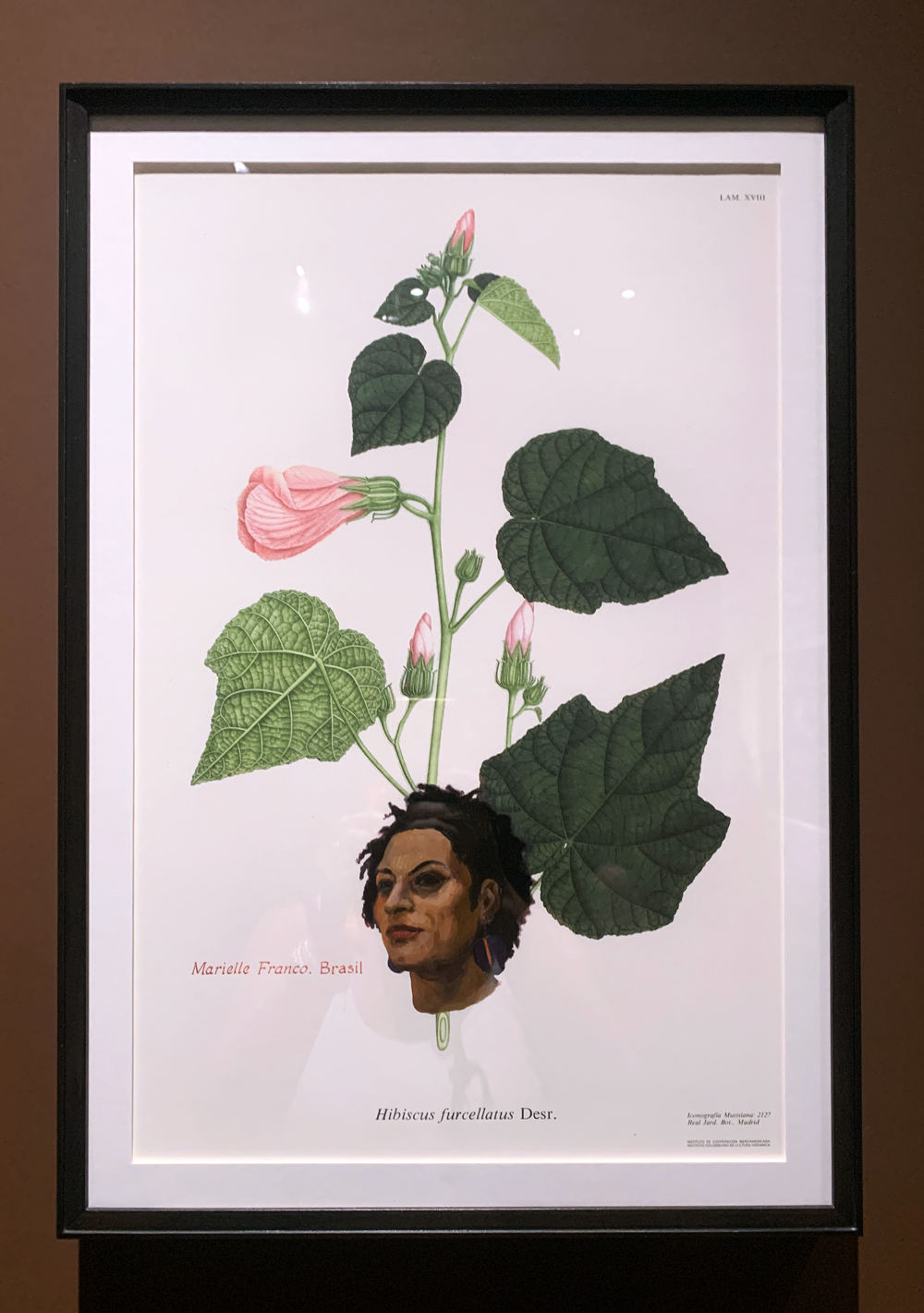
This picture is part of the Spanish Pavilion at Biennale di Venezia 2024 with the topic STRANGERS EVERYWHERE
What insight can we gain while sketching?
What do we see and what can we know? This is not just a botanical specimen.
- Who is this woman?
- Where does she come from?
- What is the scientific name of the plant?
- What happens when the artist combines a portrait and the name of a woman?
This artwork combines botanical illustration with a portrait and is titled Hibiscus furcellatus Desr.
„Desr.“ is an abbreviation for the French botanist Louis Auguste Joseph Desrousseaux (1748–1833). When „Desr.“ appears after a scientific plant name, it means that Desrousseaux was the first to describe this plant.
Here, Hibiscus furcellatus Desr. indicates that Louis Desrousseaux was the first to scientifically describe this species.
The portrait shows Marielle Franco, a Brazilian politician, human rights activist, and symbol of resistance, who was tragically assassinated in 2018 in Rio de Janeiro. Franco was a vocal advocate for the rights of Black communities, women, LGBTQIA+ individuals, and other marginalized groups in Brazil.
How do we read the artwork?
Male heroes have immortalized themselves by attaching their names to the plants they „discovered.“ This artwork, however, reverses the traditional narrative by adding the portrait and name of a human rights activist.
However, the artist turns this narrative on its head by overlaying Franco’s portrait and name onto the plant. This act symbolically reclaims a space historically reserved for male heroes of science and exploration, and instead honors a contemporary female activist who fought for justice and equality. In doing so, the artwork bridges the gap between nature and human history, creating a powerful commentary on legacy and remembrance.
Important thinking habits
See-Think-Wonder
This routine encourages students to look at a work of art and describe what they see, think about what it means, and ask questions that pique their curiosity.
Claim-Support-Question
Students make a claim about the artwork, support it with evidence from the artwork, and then ask follow-up questions to go deeper.
Circle of Viewpoints
This routine invites students to look at an artwork from different perspectives by considering how different people or characters might interpret the artwork.
Colours, Shapes, Lines
Students focus on the formal elements of a work of art and discuss how colours, shapes and lines contribute to the overall message of the work.
Routines of artful thinking
By applying routines, students learn to look more closely, think more deeply and communicate their ideas more clearly.
Artful Thinking aims to strengthen students‘ critical thinking and creative problem-solving skills.
Application in practice
Lecturers can use Artful Thinking in a variety of subjects and age levels. For example, an economy lecturer might use a contemporary artwork to get students thinking about the social impact or time period.
Benefits of Artful Thinking
Encourage critical thinking
Students learn to question and elaborate on their observations and interpretations.
Improve communication skills
By discussing and sharing their thoughts, students develop their ability to express ideas clearly and concisely.
Increase creative problem solving
Art provides a variety of interpretive opportunities that encourage students to think creatively and flexibly.
Increasing interdisciplinary learning
Linking art to other areas of knowledge promotes a holistic understanding and application of knowledge in different contexts.
Thinking Routines
These routines are structured approaches that help students visualise and articulate their thinking processes. They provide a simple structure that can be easily integrated into lessons.
Observation and description
Artworks are used to get students to look closely and give detailed descriptions. This sharpens their powers of observation and their ability to recognise and interpret details.
Interpretation and analysis
Students learn to interpret their observations and analyse different meanings and messages in works of art. This encourages critical thinking and the ability to understand complex concepts.
Connection and application:
Connection and application
Students are encouraged to make connections between the artworks and other areas of knowledge or their own lives. This supports interdisciplinary learning and the application of knowledge in new contexts.
The Prefrontal Cortex helps in finding unconventional solutions and managing creative processes.
The prefrontal cortex is crucial for planning, decision-making, and problem-solving. When sketching and engaging in creative thinking, the PFC is highly active, particularly when generating new ideas and evaluating different approaches. Artful Thinking stimulates the PFC through reflection and analysis of artworks, requiring students to think through and evaluate alternative perspectives.
Temporal Lobes enables connecting past experiences with new visual insights, fostering the development of fresh ideas.
The temporal lobes are responsible for processing visual information and retrieving memory. In sketching and visual imagination, Artful Thinking activates the temporal lobes, especially when recognizing patterns and making associations between known visual impressions and new creative ideas.
The Parietal Lobes allows the mental manipulation of three-dimensional objects or abstract forms, which is crucial for innovative artistic approaches.
The parietal lobes process spatial information and help coordinate visual memory with motor skills. In sketching, this area is activated to capture and translate the spatial structure of an artwork onto paper.
Occipital Lobes: By intensely engaging with the visual aspects of a piece of art, more visual information is absorbed and interpreted, leading to new creative ideas.
The occipital lobes handle visual stimuli. During sketching, they play a key role in coordinating the perception and recognition of lines, shapes, and colors.
The Default Mode Network supports free, unplanned thinking and plays a significant role in spontaneous creativity and imagination.
Function: The DMN is a brain network activated during daydreaming or spontaneous creativity. While sketching or free drawing, the DMN can engage in the creative process by triggering unconscious thoughts and associations.
Amygdala and Limbic System: Artworks can evoke strong emotional reactions, which in turn stimulate the creative process.
The limbic system, including the amygdala, is involved in processing emotions. Creativity is often deeply connected to emotional experiences, and interacting with art can trigger emotional responses that enhance creative motivation.
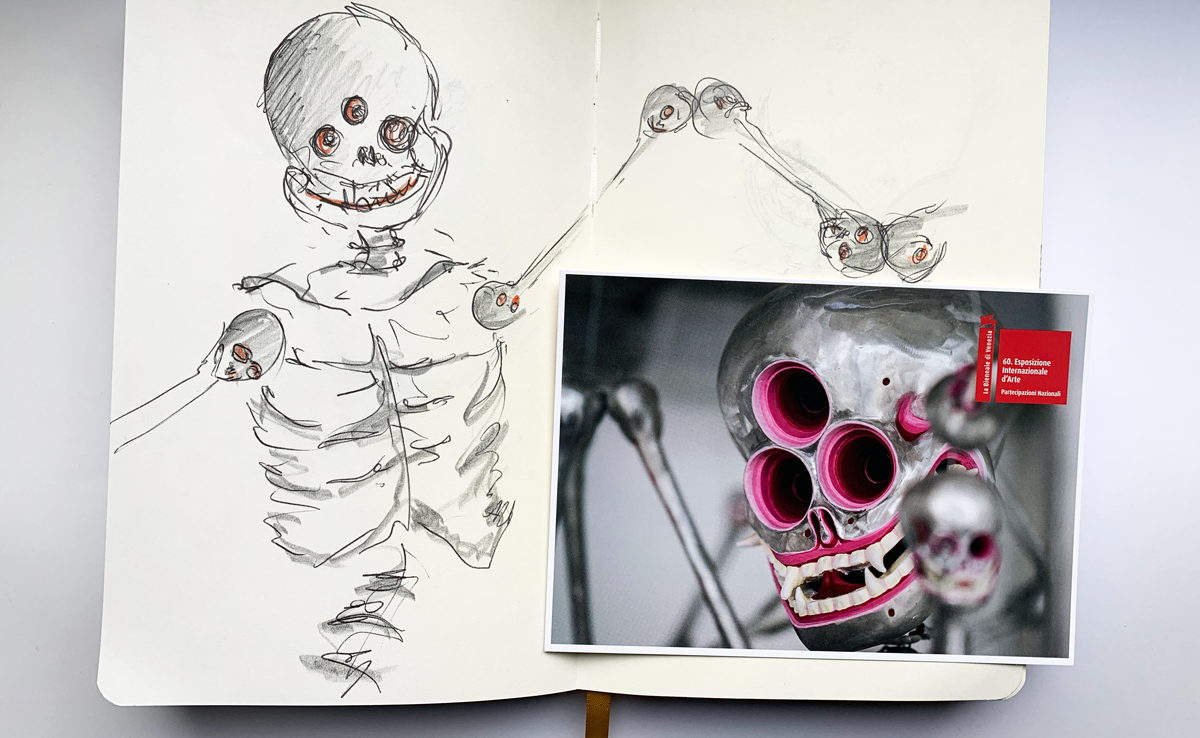
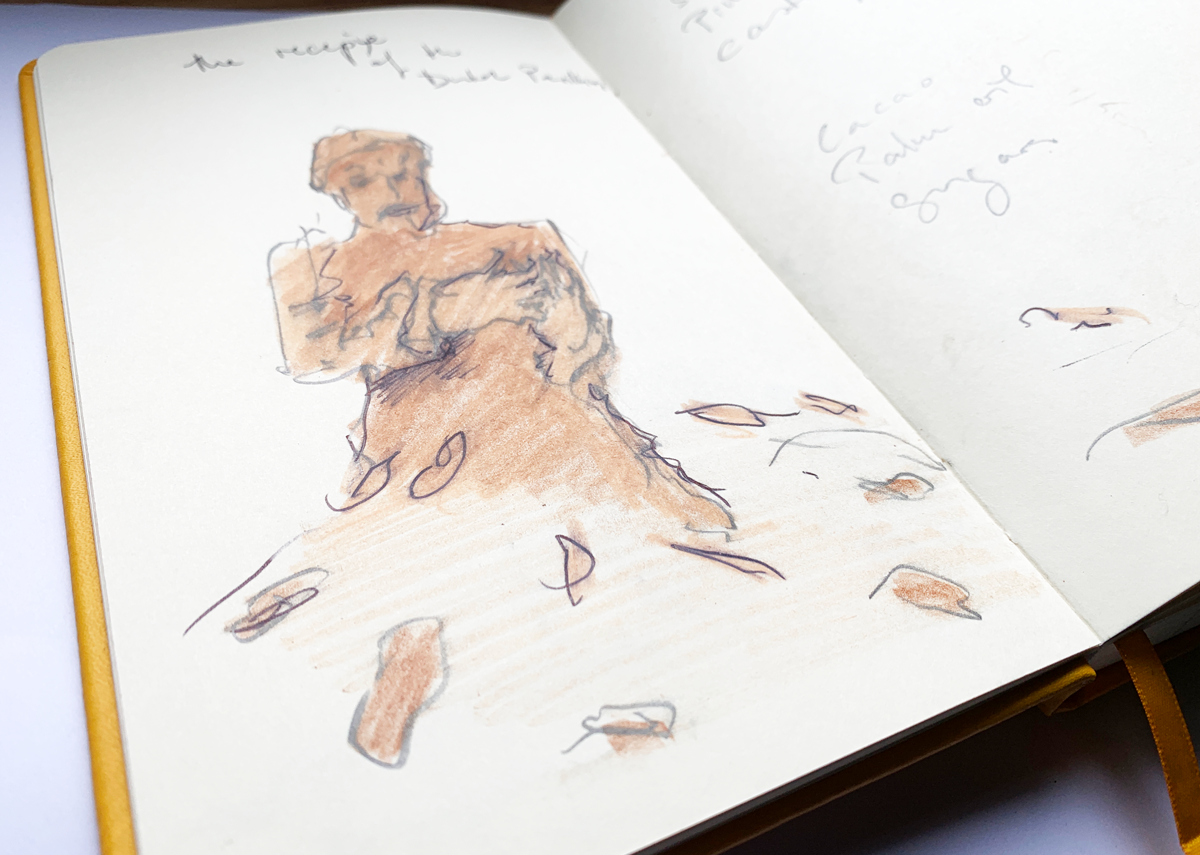
An Artful Thinking Recipe
- 1 cup of Observation (Careful looking)
- 2 tablespoons of Reflection (Thinking and evaluating)
- A pinch of Emotion (Personal connection and feeling)
- ½ cup of Imagination (Visualizing possibilities)
- 1 tablespoon of Experimentation (Willingness to try new things)
- 3 teaspoons of Technique (Mastery of tools and materials)
- A dash of Courage (Taking creative risks)
- Sprinkle of Playfulness (Allowing freedom and joy in the process)
The Venice Biennale as a field of research between sustainability and drawing
The Venice Biennale 2024, titled „Foreigners Everywhere“ (Stranieri Ovunque), explores themes related to migration, diaspora, exile, and the concept of „foreignness“ in both literal and metaphorical senses.
The 60th edition of this prestigious art exhibition focuses on artists who are immigrants, expatriates, or belong to diasporic or marginalized groups, reflecting on their experiences of crossing boundaries—be they national, cultural, or social.
Foreigners are present everywhere and that, in a deeper sense, all of us experience being foreigners at some point in our lives, whether due to identity, race, gender, sexuality, or culture.
The exhibition features both contemporary and historical works, with a particular focus on the Global South, showcasing artists who have migrated between regions, as well as indigenous and queer artists often marginalized in their own contexts.
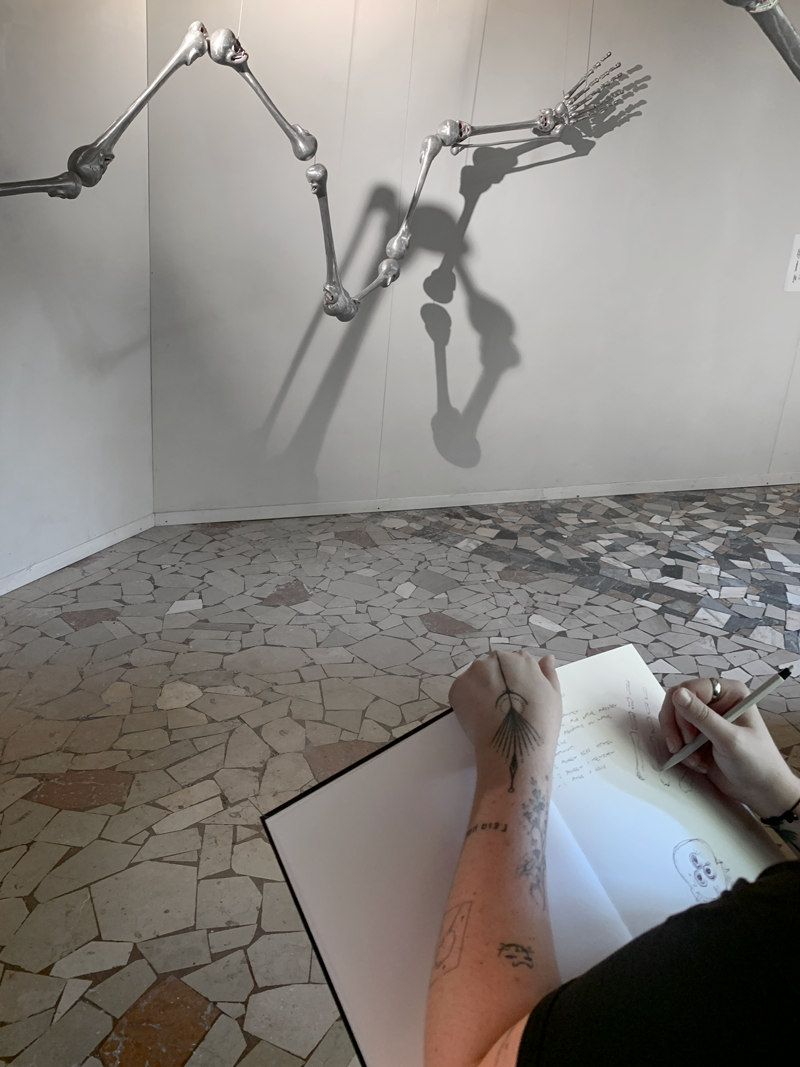
Sketch&Draw as an enabler
If you now feel like sketching, you can use the tutorials to learn how to sketch on your own.
Free trial
Try one lesson and decide if you want to do the whole course. Click for the free trial ...
Certificate
If you want to achieve a certificate that proves your sketching skills, get all your information here ...

